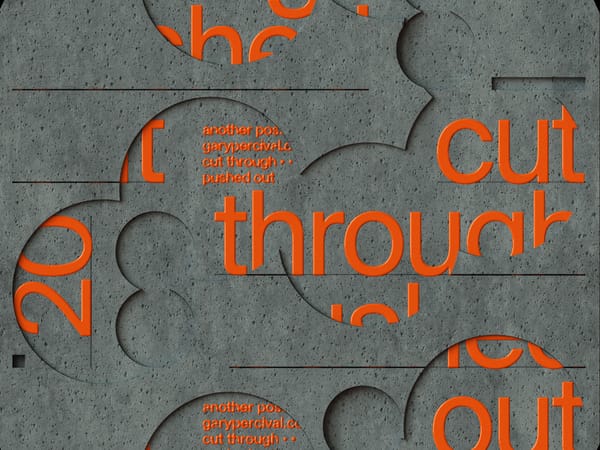Your Ideal Role Might Have the Wrong Name
“Your ideal role might have the wrong name—and that label could be quietly keeping you out of the opportunities where you’d thrive.”
Ever chased a role that looked great on paper… only to find it didn’t feel quite right?
Or maybe you’ve been freelancing, trying to define exactly what kind of work you want, but nothing fits cleanly?
Here’s a thought that might explain why:
Your ideal role might have the wrong name.
And if that’s true, the label you’re using could be limiting your opportunities—without you even realising it.
Why We Cling to Titles
From day one, we’re taught to define ourselves by neat, recognisable labels:
- Graphic Designer
- Creative Director
- Animator
- Photographer
- UX Designer
- Studio Owner
- Freelancer
Those titles come with built-in assumptions about skill level, status, and value. They make us legible to the industry—but they can also put us in the wrong box.
You might be part strategist, part storyteller, part systems thinker… yet feel you have to pick one label to be taken seriously.
When the Title Doesn’t Match the Work
Say you call yourself a graphic designer. But the reality is you:
- Lead creative direction
- Shape client strategy
- Write brand messaging
- Build workflows
- Collaborate across disciplines
That’s not just design—it’s strategy, leadership, and problem-solving.
Yet you might still be applying for “mid-weight graphic design” jobs because the title feels safe and familiar. The problem? That safety could be keeping you out of the rooms where you’d actually thrive.
Freelancers Fall Into This Trap Too
Even with more freedom, freelancers can stick too tightly to a label:
“I’m a freelance designer.”
“I do branding.”
“I make posters.”
Then someone asks if you can consult, write copy, or ideate campaign concepts—and your first reaction is, That’s not what I do.
But maybe it could be. Sometimes, the opportunity is fine—the title just needs to stretch.
Flip It: Skills First, Title Second
Instead of starting with a title, start with your strengths:
- What problems do you love solving?
- What activities energise you most?
- What do clients rave about in your work?
- What do you gravitate towards, even unpaid?
When you lead with this, you start to see the real through-line in your career—and it’s often broader (and more valuable) than your current label suggests.
What If Your Dream Role Doesn’t Exist Yet?
Here’s something no one tells you: you might have to invent it.
It could be a hybrid between disciplines, a new function inside an agency, or something no one’s hiring for yet.
If so, your job is to:
- Shape your positioning around it
- Pitch yourself into spaces where it’s needed
- Show proof of concept in your portfolio
- Help others see it (because they won’t always get it immediately)
Just because it’s not on a job board doesn’t mean it’s not real.
Rewriting Without Losing Your Roots
You don’t have to abandon your foundation—you can keep your core skills while reframing the label.
Examples:
- Graphic Designer → Visual Communicator & Brand Strategist
- Animator → Motion Designer Telling Emotion-Driven Stories
- Freelancer → Independent Studio Partnering on Concept-Led Design
Small changes in framing can open big new doors.
Why This Matters to Clients
Clients look for familiar titles because it helps them understand the creative world. But if you explain how you think and what you do best, you help them see you differently—often in ways that make you more valuable.
You stop being “another designer” and start being the person who solves their specific problem.
Signs You’ve Outgrown Your Title
If you’re unsure, look for these clues:
- You feel boxed in by client expectations.
- You regularly do more than your job description.
- Your title feels incomplete.
- You find it hard to sum up your role in one sentence.
- You’re curious about work outside your lane.
These aren’t warning signs—they’re signals you’re ready to evolve.
Let Your Work Lead the Way
Sometimes your portfolio knows before you do.
Review your last few projects:
- What role did you actually play?
- What problems did you solve beyond the brief?
- Which parts lit you up?
You may discover you’ve been doing strategic direction, brand consulting, or cross-discipline collaboration all along—you just haven’t claimed it.
The Label Is Flexible—Your Core Stays the Same
Changing your title doesn’t change your identity. Your values, style, and instincts are still there—you’re just making it easier for people to understand what you really do.
The title you use can open doors—or keep you in the wrong room. Your skills, instincts, and creative value aren’t confined to one label.
If your current title doesn’t reflect what you actually do best, it’s time to reframe it. Lead with your strengths and the problems you love solving—not just a job description.
👉 You can grow beyond your title without losing who you are.
Final thought:
Don’t let the wrong label keep you in the wrong room. You can outgrow a title, rewrite it, and step into a role that actually reflects your skills.
Because the best creative careers aren’t built on the perfect job description—they’re built on clarity, curiosity, and the courage to evolve.
Thanks for reading, and until next time, keep shaping your role to fit you,
—Gary



